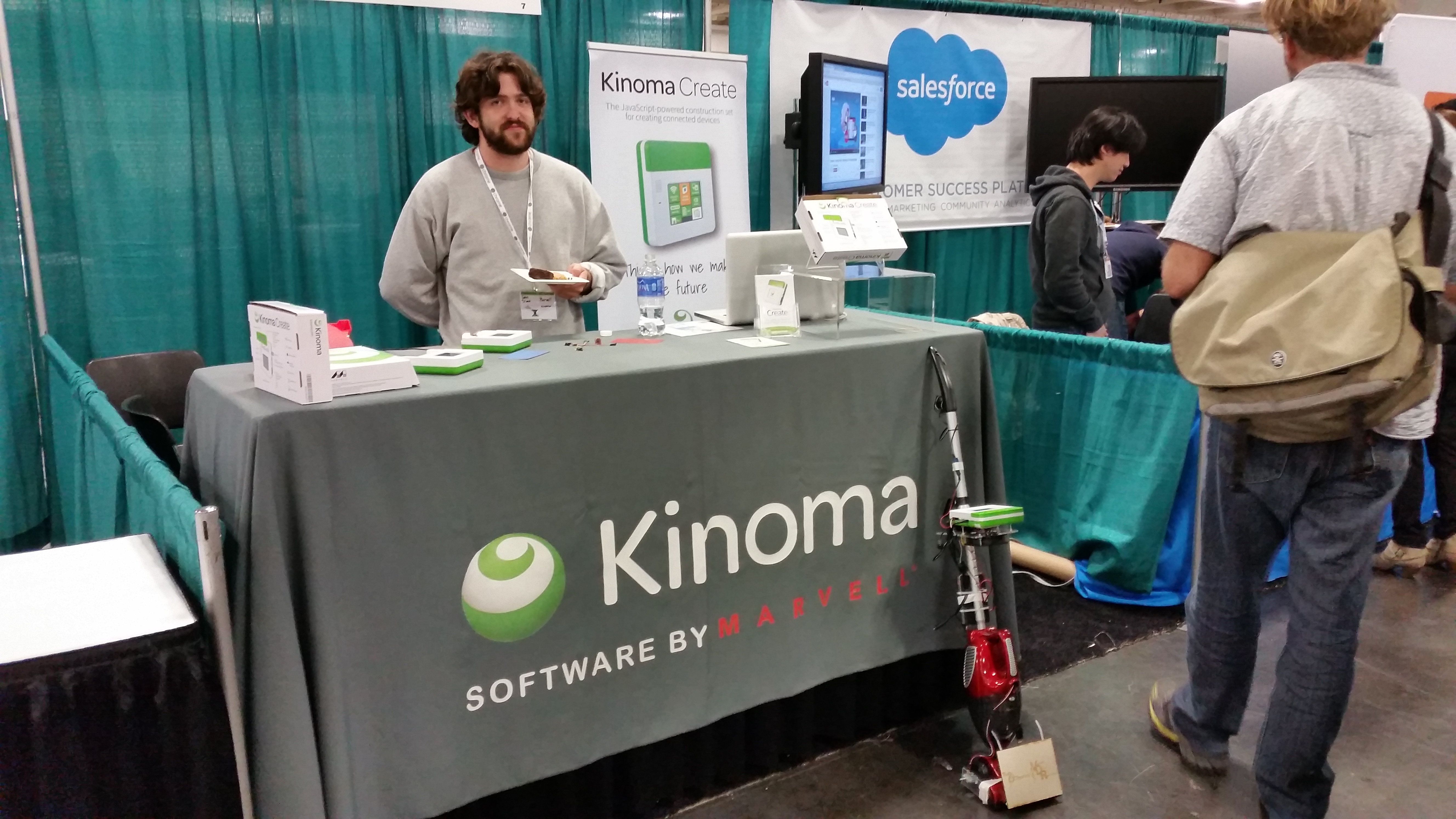VDR : Vacuum Dance Revolution

Winner of 3rd Most Creative Award at UIST 2014 Student Innovation Contest! (Oct 7th, 2014)
"Tug O' Chores" is an entry to the UIST Student Innovation Competition 2014, which has been awarded 3rd place most creative, from 26 competing entries, by a group of esteemed judges including Patrick Baudisch and Andy Carle from Marvell Kinoma.
The project renamed Tug O' Chores : VDR "Vacuum Dance Revolution" focuses on utilizing the motion occurring during vacuum cleaning to play a rhythm based game, motivating people to clean in a gamified experience.
Heavy tweaking to the Kinoma device (the sponsored device for the competition) was applied to make it more mobile, responsive and durable during the heavy movement packed game.
Finally, a web application was build allowing players to compete and compare their results over the internet, also to stream their progress during playing, and people can "cheer" them off the web, and cheers are converted into a distinct vibration pattern on the vacuum cleaner handle.
Team:
Special thanks to Nur Al-huda Hamdan, Prof. Jan Borchers and all beta testers in the lab for their feedback!

Implementation
Various sensors are fitted on the vacuum cleaner, and enhancements were made to the Kinoma device.
Sensors & Enhancements

- Vibrating motor - embedded in the vacuum handle for a haptic feedback
- Kinoma Create - Javascript-based construction kit used to connect different sensor and game UI
- Accelerometer - connected to the Kinoma to detect tilting of the vacuum handle
- 12VDC fan - for cooling
- Portable Battery - operated in 12V and 5V mode to operate the fan and Kinoma for around 5 hours.
- Audio Speaker - a mono battery powered speaker fitted inside the vacuum cleaner.
- Wheel Encoder - detect the movement of the vacuum cleaner backward and forward.
- Digital Compass - detect the heading of the vacuum cleaner either left, right, straight, or a U-turn.
Enhancements
- The Kinoma Create comes originally fitted with a 3.7V battery at the back, but the portable battery(3) was used to extend the playing time on the vacuum cleaner for several hours.
- The audio speaker(4) is an enhancement to the Kinoma, as the original speaker embedded in the Kinoma comes with a lesser power. a new connection was made on the board to replace the old speaker with an audio-out jack to extend the range of audio devices to be installed on the Kinoma.
Future Work
- Addition of a heart rate sensor on the handle of the vacuum cleaner to monitor the heart rate, combined with the physical effort that is computed from the velocity and distance obtained from the wheel encoder sensor, we can create a health and fitness gadget.
- The Kinoma was made for rapid prototyping, but also it's software can be ported on other mobile platforms such as iOS and Android. This allows players to use their tablets or phones instead of buying a Kinoma specifically for the project.
The Architecture
The programming language used is javascript, while the Kinoma Create has it's own SDK which is based on Node.JS. This allowed to develop an MVC software architecture for the UI and the sensors pulled data.
Web Sockets are used for all web-based communication between the Kinoma and the main game web server, and for the connection between the Kinoma and the digital compass streaming it's heading angle. The Kinoma acted as a web socket client and server.
While the IPhone was used as a digital compass due to uncontrollable circumstances, other sensors can be used such as magnetometer or MPUs which combine accelerometers and magnetometers to compute orientation in 3D. Furthermore, there are many wireless enabled smaller and cheaper development kits to connect to the Kinoma and replace the IPhone for wireless sensor streaming.
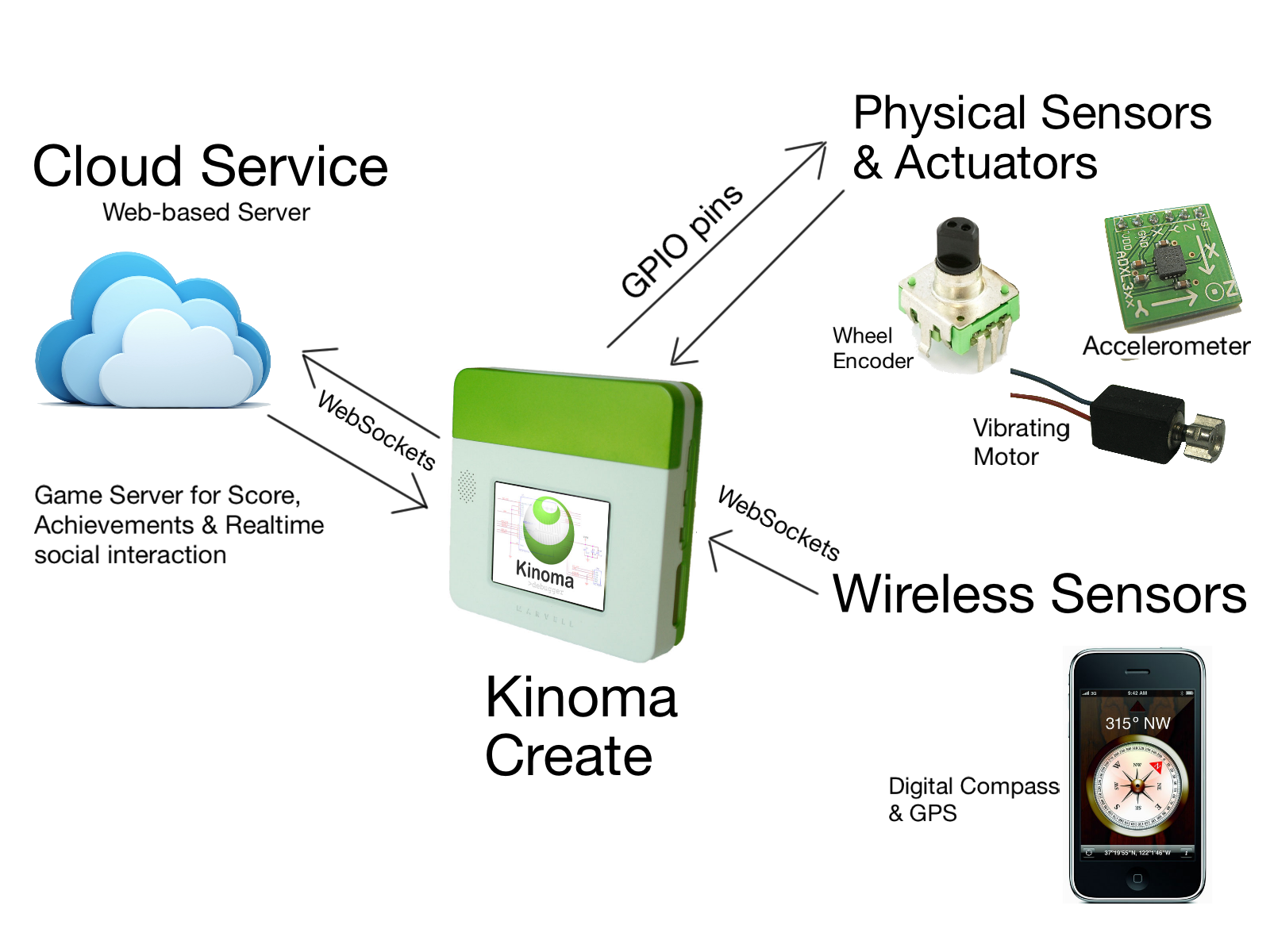
GamePlay & Social Interaction
Vacuum Dance Revolution (VDR) is a physical rhythm game, which aims to use the concept of the fun theory to change people’s behavior and encourage people to clean in a gamified experience.
The Gameplay & User Interface
Players hear the music, and try to follow the dancing rhythm of the music. Similar to Dance Dance Revolution (DDR), this game requires physical strength and fitness to follow the music rhythm and score, while allowing the players to show their skills in public.
VDR does not need a TV to show the steps that the player need to take while playing the game. It was built for a small mobile screen interaction, such as the Kinoma or any other mobile device (Tablets, smartphones... etc.) which can be fitted on the handle of the vacuum cleaner and then connected to the vacuum cleaner sensors to start playing.

Physical Online Social Experience
VDR is also connected to the cloud allowing the players to play online, showing their score, achievements and progress while a game is in session.
Furthermore, it extend the online social presence by allowing the players to get cheered on or liked from the online audience in their online social networks while they are playing. These likes or cheers are converted to haptic vibration on the handle of the vacuum cleaner.
The Competition & Award (UIST 2014)
Videos & Photos
These videos and photos were taken during the competition.
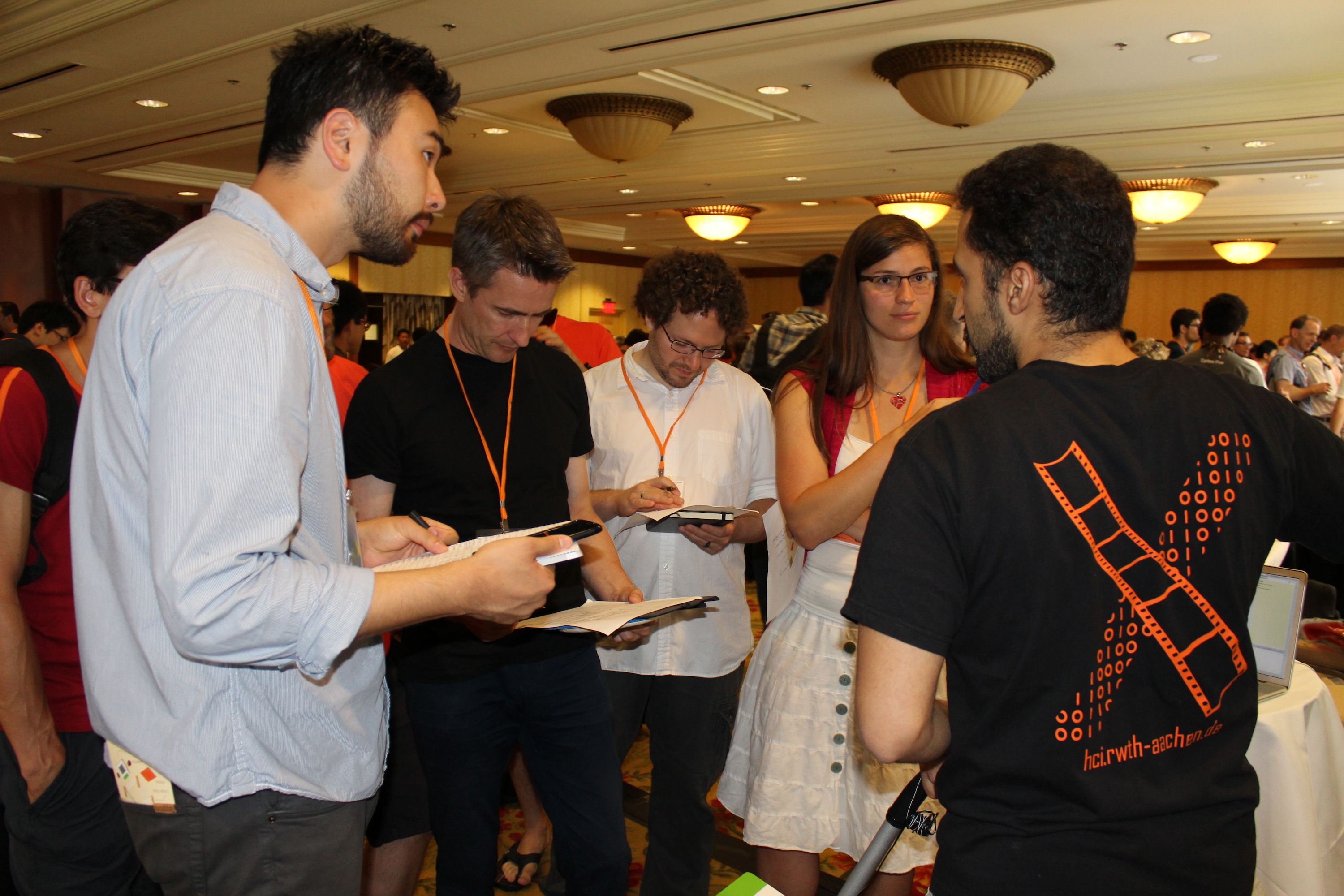
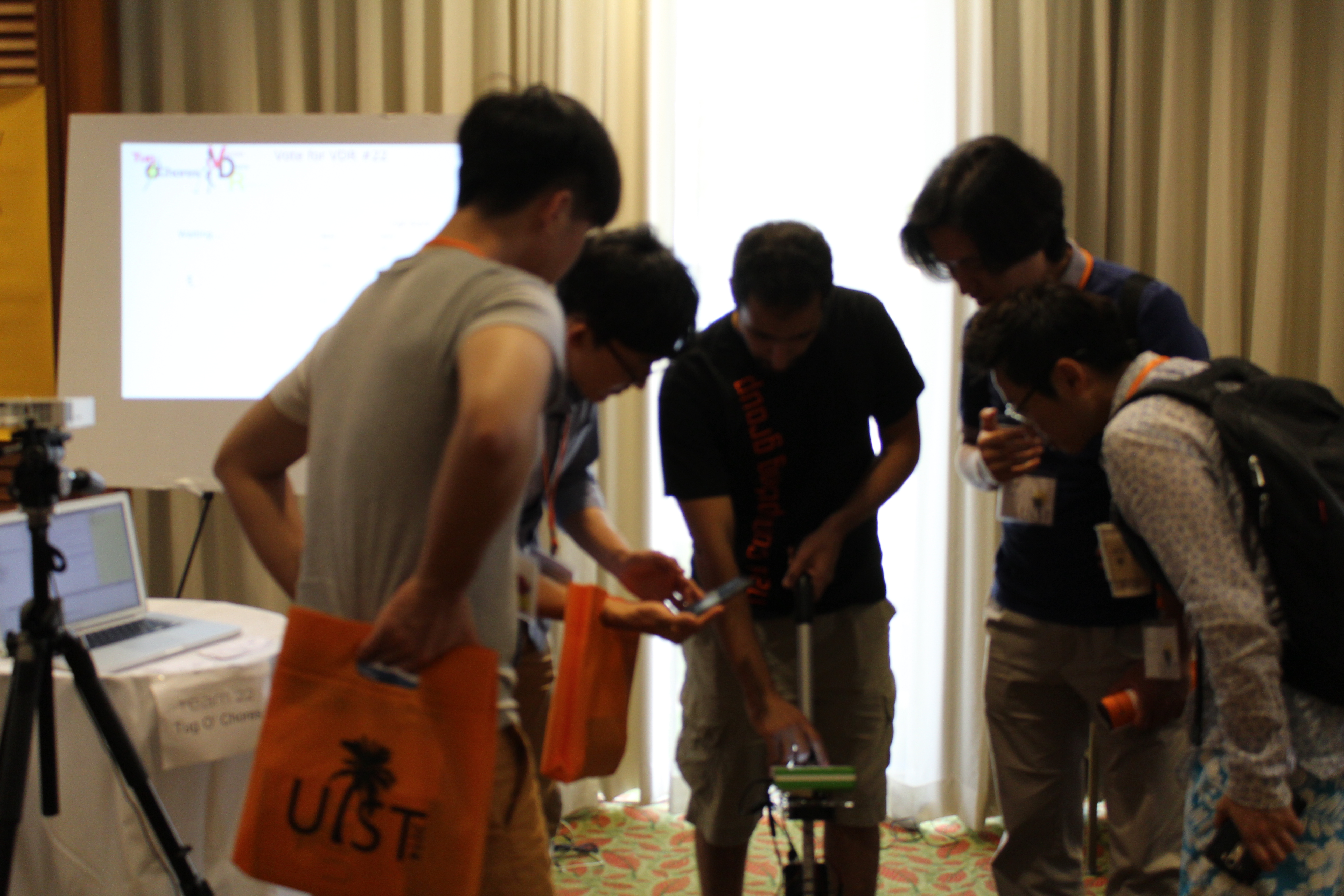
Award Ceremony
The Award Ceremony was held during the banquet at the Chief's Luau at Sea Life Park in Hawaii. VDR was awarded 3rd Most Creative.
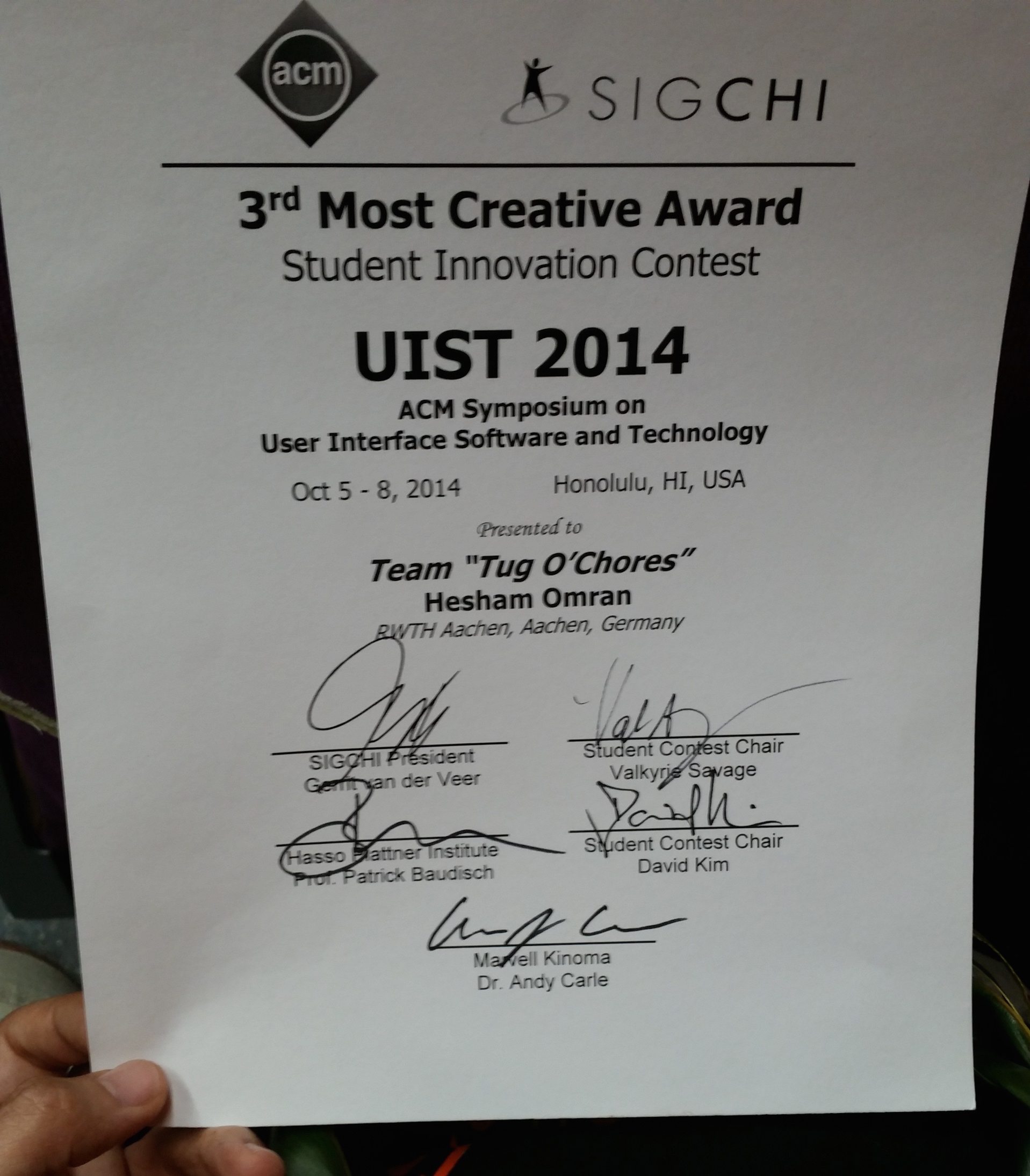

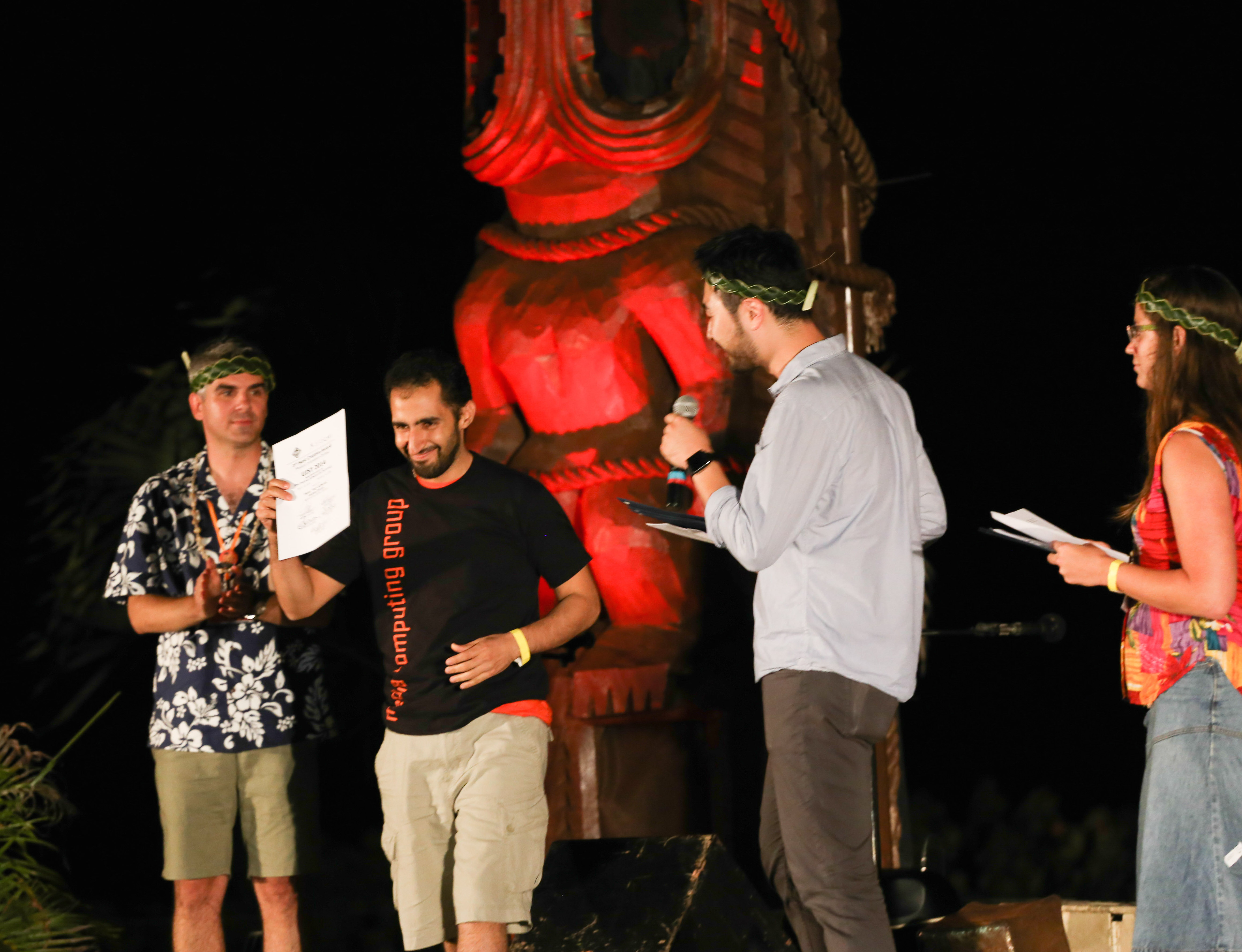
VDR displayed at IoTAConf
Passing by the Kinoma booth at IoTAConf in San Francisco, I brought along VDR to the booth, to show people examples of projects that can be made by the Kinoma Create.

